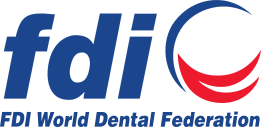Advertising in Dentistry
Context
Policies and regulations related to advertising in dentistry vary greatly among countries. Advertising in dentistry is prohibited in some countries, while in other countries dental advertising regulations range from strict to very lenient. In the absence of consistent dental advertising regulations, the public risks being misled by exaggerated and spurious advertising claims. However, information intended to demonstrate the benefits of good oral health should be made freely available.
Scope
Advertising in dentistry has the potential to have an impact on the professionalism and social perception of dental professionals. Due to their professional commitment to the oral health and well-being of the public, dental professionals should exert self-regulation based on autonomy, beneficence, and veracity. Dental professionals and their NDAs should provide patients with accurate, transparent and reliable information that benefits their oral health.
Definitions
Advertising in dentistry
Any information and/or material related to the promotion of dental services of a dental practice by individuals or corporations involved in the delivery of care. Advertising in dentistry includes any information related to the dentist/dental practice, regardless of the form of distribution, such as flyers, websites, social media postings, blogs, advertorials, newsletters, business cards, stationery, logos, infographics, signage, announcements, digital or artificial intelligence (AI)-based marketing.
Social media
Digital platforms and applications that enable users to create, share, and interact with content, including but not limited to professional networking sites, social networking platforms, video-sharing platforms, blogs and microblogging services, online review and rating platforms, and messaging applications used for professional communication.
Digital and AI marketing
The use of digital technologies and AI systems for promoting dental services, which includes but is not limited to: digital marketing components (search engine optimization, pay-per-click advertising, email marketing campaigns, virtual reality or augmented reality demonstrations, online appointment booking systems, mobile applications for patients engagement on their own information) and AI-powered marketing elements (automated patient chatbots for patient inquiries, personalized marketing recommendations).
Ethics on advertising in dentistry
The ethical principles and professional standards that guide the promotion of dental services, ensuring that advertising maintains professional integrity, supports patient well-being, and upholds public trust.
Principles
The basic principles of regulations on Advertising in Dentistry include:
- Beneficence: protect the health and well-being of the public.
- Non-maleficence: avoid any harm to patients and the public by ensuring that all communicated claims are supported by evidence-based information.
- Veracity: commit to truthful and accurate representation of information.
- Respect for patient’s autonomy: support informed patient decision-making.
- Professional integrity: uphold the dignity and integrity of the profession.
- Legal and regulatory compliance: abide by relevant laws and regulations.
Policy
Dental advertising should:
- be accurate;
- be factual, i.e. supported by scientific evidence rather than personal feelings, anecdotes, beliefs, opinions or interpretations;
- align with professional integrity and dignity;
- be balanced with respect to the advantages, disadvantages, and limitations of the proposed treatment;
- comply with relevant national and local laws, regulations, and professional guidelines;
- maintain patient privacy and confidentiality;
- disclose to patients the use of digital or AI technologies.
Dental advertising must not:
- be false, unclear, exaggerated, misleading, fraudulent;
- be comparative with or disparage other dentists;
- solicit or canvas for patients;
- seek to embellish;
- use superlative or comparative terms, to suggest higher quality in relation to services, equipment, technology used, or products or persons providing the services;
- arouse unnecessary concern or distress;
- generate unrealistic expectations;
- misrepresent credentials, qualifications, or experience;
- use patient testimonials without appropriate consent and verification;
- manipulate search engine results or online reviews in deceptive ways;
- abuse social media platforms;
- bring the profession into disrepute.
Not all of the above applies to all countries. National Dental Associations are therefore encouraged to work with regulators and national authorities to establish their own clear rules and regulations on advertising.
Keywords
Beneficence, non-maleficence, veracity, patient’s autonomy, professional integrity.
Disclaimer
The information in this Policy Statement was based on the best scientific evidence available at the time. It may be interpreted to reflect prevailing cultural sensitivities and socio-economic constraints.
Further reading
- American Dental Association. Principles of Ethics & Code of Professional Conduct. Accessible from: https://commons.ada.org/cgi/viewcontent.cgi?article=1001&context=codeethicsthics [Accessed 6 October 2025].
- Royal College of Dental Surgeons of Ontario. Practice Advisory. Professional Use of Social Media. Available from:
https://cdn.agilitycms.com/rcdso/pdf/practice-advisories/RCDSO_Practice…
[Accessed 6 October 2025]. - FDI World Dental Federation. Dental Ethics Manual 2. Available from: https://www.fdiworlddental.org/sites/default/files/2020-11/fdi-dental_e… [Accessed 6 October 2025].
- Royal College of Dental Surgeons of Ontario. Practice Advisory. Professional Advertising. Available from: https://cdn.agilitycms.com/rcdso/pdf/practice-advisories/RCDSO_Practice… [Accessed 6 October 2025].
- Royal College of Dental Surgeons of Ontario. World of advertising changes with new technology yet provincial advertising regulations still applicable today. 2013.
- Roucka TM, Donate-Bartfield E, Zarkowski P. In social media age, watch what you say. Gen Dent. 2014;62(1):19–21.
- DeCamp M, Sulmasy LS. Ethical and Professionalism Implications of Physician Employment and Health Care Business Practices: A Policy Paper From the American College of Physicians. Ann Intern Med. 2021;174(6):844-851.
- Ozar DT, Sokol DJ, Patthoff DE. Dental ethics at chairside: professional obligations and practical applications. 3rd ed. Washington (DC): Georgetown University Press ; 2018.
- Fauchard, P. Le Chirurgien-dentiste ou traité des dents. Paris. P. J. Mariette ; 1746.
